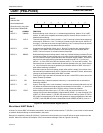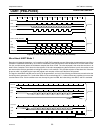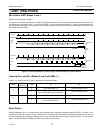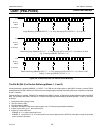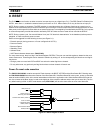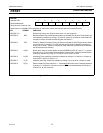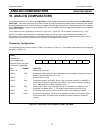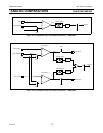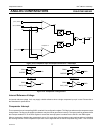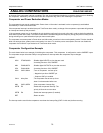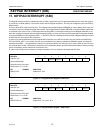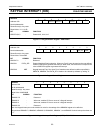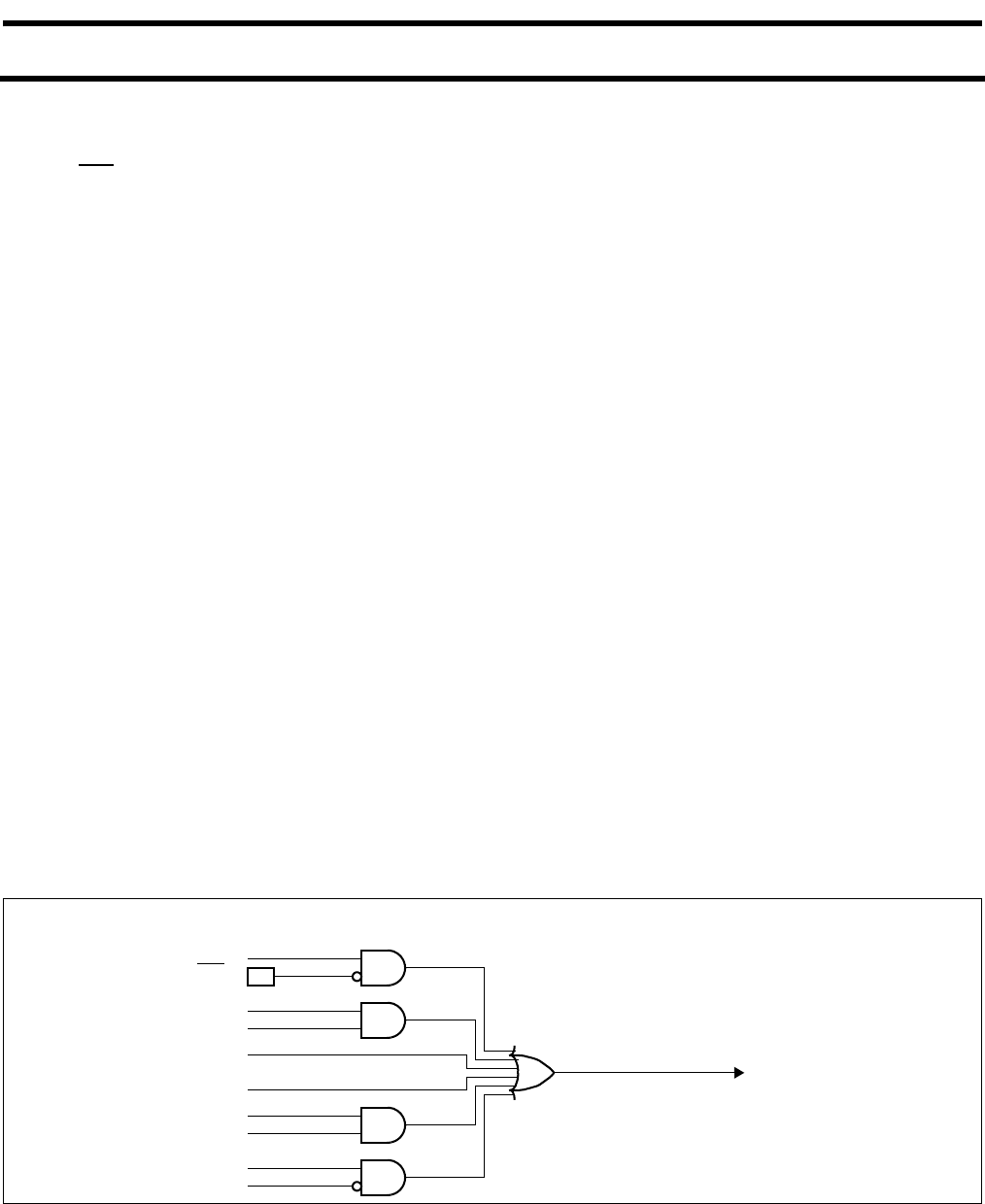
Philips Semiconductors
User’s Manual - Preliminary -
P89LPC901/902/903
RESET
2003 Dec 8 73
9. RESET
The P1.5/RST pin can function as either an active low reset input or as a digital input, P1.5. The RPE (Reset Pin Enable) bit in
UCFG1, when set to 1, enables the external reset input function on P1.5. When cleared, P1.5 may be used as an input pin.
NOTE: During a power-on sequence, The RPE selection is overriden and this pin will always functions as a reset input. An
external circuit connected to this pin should not hold this pin low during a Power-on sequence as this will keep the device in reset.
After power-on this input will function either as an external reset input or as a digital input as defined by the RPE bit. Only a power-
on reset will temporarily override the selection defined by RPE bit. Other sources of reset will not override the RPE bit.
NOTE: During a power cycle, V
DD
must fall below V
POR
(see "DC electrical characteristics" in the datasheet) before pwoer is
reapplied, in order to ensure a power-on reset.
Reset can be triggered from the following sources (see Figure 9-1):
• External reset pin (during power-on or if user configured via UCFG1);
• Power-on Detect;
• Brownout Detect;
• Watchdog Timer;
• Software reset;
• UART break-character detect reset. (P89LPC903)
For every reset source, there is a flag in the Reset Register, RSTSRC. The user can read this register to determine the most
recent reset source. These flag bits can be cleared in software by writing a ’0’ to the corresponding bit. More than one flag bit
may be set:
• During a power-on reset, both POF and BOF are set but the other flag bits are cleared.
• For any other reset, any previously set flag bits that have not been cleared will remain set.
Power-On reset code execution
The P89LPC901/902/903 contains two special Flash elements: the BOOT VECTOR and the Boot Status Bit. Following reset,
the P89LPC901/902/903 examines the contents of the Boot Status Bit. If the Boot Status Bit is set to zero, power-up execution
starts at location 0000H, which is the normal start address of the user’s application code. When the Boot Status Bit is set to a
one, the contents of the Boot Vector is used as the high byte of the execution address and the low byte is set to 00H. The fac-
tory default setting is 00H. A UART break-detect reset (P89LPC903) will have the same effect as a non-zero Status Bit.
Figure 9-1: Block Diagram of Reset
Chip Reset
RPE (UCFG1.6)
Watchdog Timer Reset
Software Reset SRST (AUXR1.3)
Power-on Detect
RST
Pin
WDTE (UCFG1.7)
UART Break Detect
EBRR (AUXR1.6)
Brownout Detect Reset
BOPD (PCON.5)



